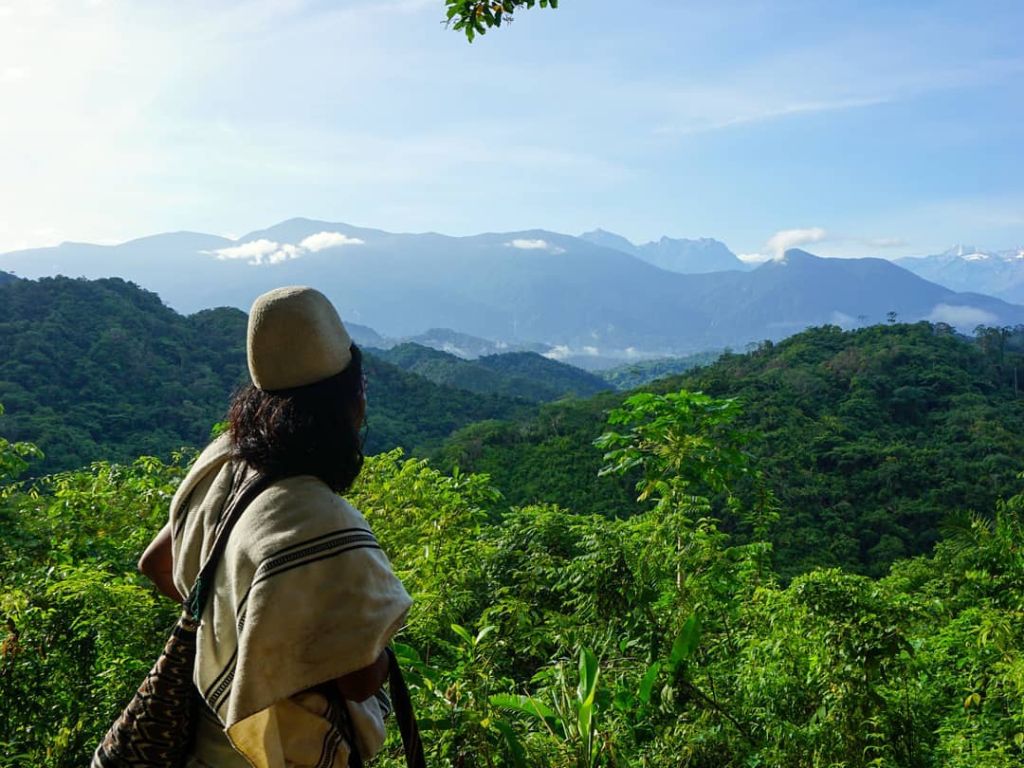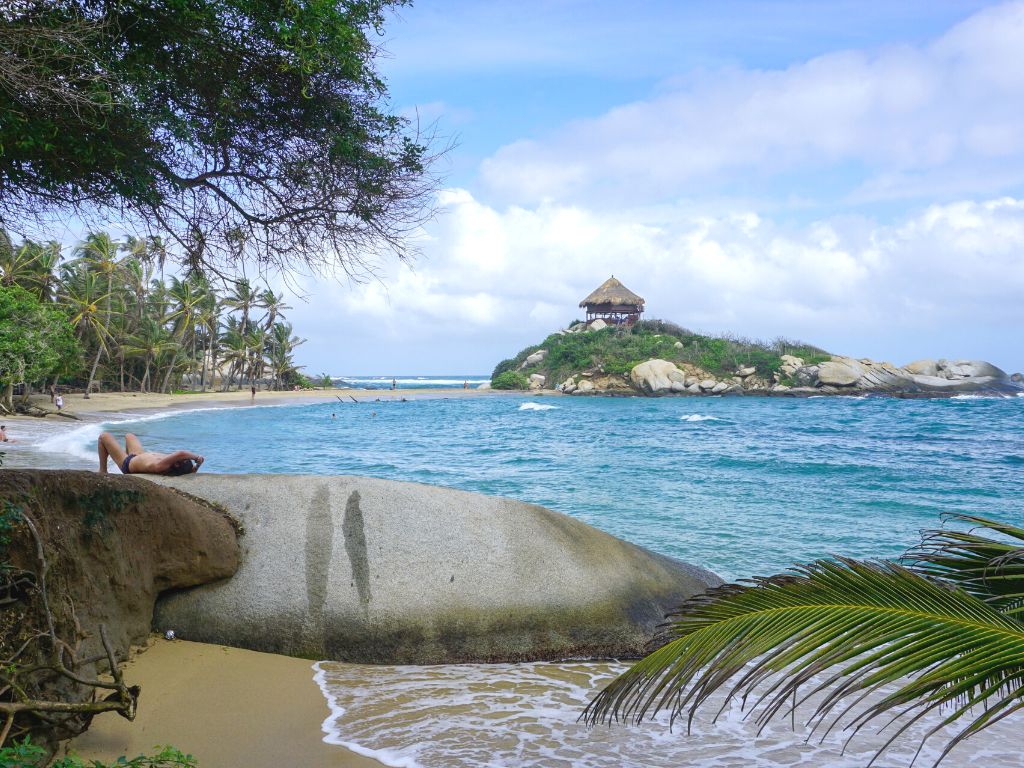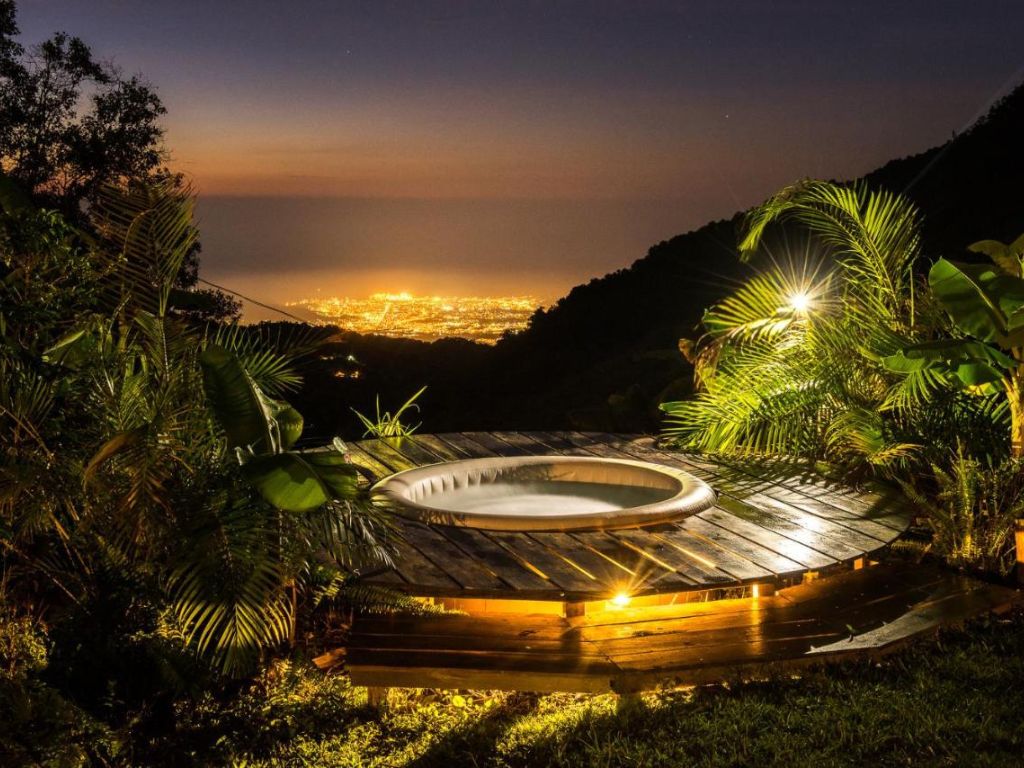Explore La Sierra Nevada de Santa Marta [Travel Guide]
Editeur
Last updated
The Sierra Nevada de Santa Marta is your one chance to add some coolness and wild nature to your trip along this part of the Caribbean coast.
What can you do there? What’s worth seeing? What is the renowned Ciudad Perdida trek everyone talks about? I spent several months in the Sierra Nevada, and here are my impressions.

We are on a quest across Colombia to discover the top local agencies to establish a trustworthy network of experts and gather unique, valuable insights for each destination. Our aim? To make you fall in love with Colombia effortlessly.

- In Colombia since 2015
- + 975 verified experiences
- + de 125 experts met
- + 285 optimized itineraries
Explore La Sierra Nevada de Santa Marta [Travel Guide]
My adventurous side is enthralled by the lush vegetation of the Sierra Nevada, teeming with wildlife, paradise beaches, hidden hippy towns and the ruins of a fascinating civilization.
The landscapes are breathtaking; there’s always a waterfall to cool off in, and encounters with Indigenous peoples are enriching experiences. The Sierra Nevada is largely protected from the public for its preservation, so you’ll need to set off on your adventure with an experienced guide.
TOM’S TIP
If you like hiking and challenges, try the 4-day trek to the Lost City (Ciudad Perdida). And on the way back, take a relaxing beach break in Tayrona Park near Santa Marta. The Sierra Nevada is also one of Colombia’s 60 national parks!

![Santa Marta : The Lost City [Ciudad Perdida] trek 4d](https://tomplanmytrip.com/wp-content/uploads/2024/06/Lost-City-in-Sierra-Nevada-de-Santa-Marta-Eastern-Caribbean-Coast_1-768x576.jpg)
Santa Marta : The Lost City [Ciudad Perdida] trek 4d
Discover the magic of the Ciudad Perdida and its importance for the indigenous communities.
View this tourMap Sierra Nevada
Sierra Nevada de Santa Marta’s facts
The Sierra Nevada de Santa Marta is synonymous with an exuberant, uncharted destination like no other in South America.
This Colombian massif is separated from the Andes range. According to the Smithsonian Tropical Research Institute, it’s considered the highest coastal mountain range on the planet (5,775 above sea level). Unesco declared the area a World Heritage site and Biosphere Reserve in 1979.
This impressive mountain hosts different indigenous people’s villages, which remain unspoiled and keep their ancient traditions. Ciudad Perdida (the Lost City) sits in the middle of its montane forests.
The place is also home to a wide variety of species that range from big mammals, wild cats, monkeys, and birds.
Location

The Sierra Nevada de Santa Marta is located on the north coast of Colombia, in front of the Caribbean sea. The Sierra consists of almost 500 thousand hectares.
The mountain range occupies three departments: Magdalena, La Guajira, and Cesar. You can access it from Santa Marta or Valledupar and their nearby villages.
Altitude

Not only is the Sierra Nevada the tallest coastal massif in the world, but it’s also the tallest in Colombia, with its two peaks: Colon and Bolivar, which elevate at 5,775 and 5,560 masl, respectively.
Ecosystem



The mountain range goes from zero to 5,775, showcasing all kinds of weather all year round, from very hot and humid to snow.
You can find equatorial rain forests, sub-Andean and Andean forests, páramo, and permanent snow. This variety translates into beaches, mangroves, deserts, and a thick jungle full of a unique range of animal and flora species.
Weather

The climate in the Sierra Nevada de Santa Marta is shaped by the Trade Winds and the mountain’s variations in altitude.
Temperatures range from 35 degrees Celsius to below-zero temperatures and different air humidity levels. For example, if you go to Ciudad Perdida (between 900 and 1,300 masl), the weather is hot and humid during the average four-day trek.
Fauna and flora



This Sierra is a sample of Colombian fauna and flora. During your visit, you’ll be immersed in the sounds of howler monkeys (the “soundtrack” of the Sierra), parrots, and the other 35% of the total bird species that live in Colombia. The area is home to jaguars, condors, agoutis (big rodents), alligators, otters, ocelots (middle-sized wild cats), and tapirs (large mammals, similar to pigs), among others.
The flora is also varied. It features 126 native species of plants and trees, such as the wax palm tree (the national tree and the tallest of its kind in the world), the caracolí, and the tagua palm tree, also called vegetable ivory, with which indigenous people make handicrafts.
Indigenous communities in the Sierra

Currently, more than 30,000 indigenous individuals populate the “magic” area of Sierra Nevada, making it the spot where most indigenous communities gather in one place in the country. They are also direct descendants of the extinct Tayronas.
Some of the members of these ethnic groups do not even speak Spanish, just their language, and they continue to wear traditional garments. These are the 4 indigenous groups that dwell in the Sierra Nevada de Santa Marta:
Kogui: This community lives in the valleys of rivers Don Diego, Palomino, San Miguel, and Ancho. They live in huts called “bohíos,” and you can see them if you hike to Ciudad Perdida.
Wiwas: These indigenous peoples inhabit the mountain’s east face, on the side that overlooks the city of Valledupar and the department of La Guajira. Their name means “people from warm weather.”
Arhuacos: They live in their capital, at the south end of the mountain, known as Nabusimake. They make their living on the production of tobacco and coca leaves, which have medicinal uses.
Kankuamo: They share the east side of the mountain with the Wiwas. This culture was on the verge of extinction, but they have been able to repopulate and save what is left of their traditions. The other community in the Sierra Nevada, to a lesser extent, is the Wayúu, which mostly lives in the desert of La Guajira.
What to do in the Sierra Nevada de Santa Marta
Apart from the “obligatory” visit to Ciudad Perdida, Sierra Nevada de Santa Marta offers the chance for trekking, birdwatching, or just relaxing at any of the many stay options in the mountain. There are plenty of tours to the massif, mostly from Santa Marta.
Trekking to Ciudad Perdida



Ciudad Perdida is a city in ruins discovered in 1976 by local explorer Franky Rey, who would share his findings with some archeologists.
It seems that the city is 650 years older than Machu Picchu!
What is now left of this ancient civilization is the stone terraces where wood huts used to be placed. The city features an advanced sewage system built by the Tayronas.
If you walk to Ciudad Perdida (you must hire a tour), you should be in good shape because the round trip takes four days. Each day you have to walk between 6 and 8 hours (not many steep slopes).
The reward after this daily effort is an excellent Colombian meal wrapped in banana leaves and a shower in a river with pristine waters. Of course, watching the surroundings, the singing and chirping of the birds, breathing in the fresh air, and, probably, walking in the pouring rain add a lot to the experience.

ADRIEN’S TIP
Organize your trek to Ciudad Perdida with the expert we recommend. I loved discovering this landmark with this local agency – one of only 5 officially authorized to go there.
![Santa Marta : The Lost City [Ciudad Perdida] trek 4d](https://tomplanmytrip.com/wp-content/uploads/2024/06/Lost-City-in-Sierra-Nevada-de-Santa-Marta-Eastern-Caribbean-Coast_1-768x576.jpg)
Santa Marta : The Lost City [Ciudad Perdida] trek 4d
Discover the magic of the Ciudad Perdida and its importance for the indigenous communities.
View this tourBeaches and trekking in Tayrona park

This national natural park lies on the Colombian Caribbean Coast. Tayrona Park is located 40.9 km away from Santa Marta, and you can quickly get there by bus.
One of the fascinating aspects of this park is the combination of magnificent beaches and the lush vegetation of the formidable mountain. Still, be cautious. You can’t swim on all the beaches due to strong currents that drag you toward the ocean.
Its many trails allow you to take short and long walks in all directions along the 225 square kilometers that make up the park. The paths are well-signaled, and you can walk around without a guide as long as you follow them.
The area is rich in fauna and flora, such as jaguars, monkeys, and alligators (although it’s unlikely you’ll see them).
You can spend as many nights as you wish in the park, either in tents or rooms.
To enjoy the park to the fullest, I suggest planning the trip to Calabazo – Punta Brava – Cabo San Juan – El Zaino, which takes 3 days.
Sharing with an indigenous family

You may arrange to visit an indigenous family from the Arhuaco tribes as part of your trek to the Sierra Nevada.
What could be more exciting than sharing a whole day with a family? You will discover a part of their culture, their way of life, their love and respect for nature.
Depending on the agency you book your trip with, sharing with Koguis or other tribes is also an option.
Climbing the Colon and Bolivar snowy peaks

The two highest peaks in Colombia offer plenty of challenges to experienced climbers.
Climbing these two peaks is not an easy task for several reasons. One is that if you’re going there, you’ll need the right gear and equipment and lots of climbing experience and fitness.
The other reason is that permissions are not easy to get. The indigenous communities are the only people allowed to grant this consent.
Climbing the peaks is best from Valledupar, on the mountain’s southeast side. Then you arrive in Pueblo Bello and San Sebastián, two Arhuaco villages.
Then, it can take three days of trekking until you see the snowcapped mountains from afar. Then, you go around lagoons at 3,000 masl before starting to climb the peaks.
At the beginning of 2022, three Latin American climbers (two Colombians and one Ecuadorian) reached the summit. The adventure took them 14 days.
Sunrise from Cerro Kennedy

The 2-day trek to Cerro Kennedy is not as well-known as other trips in the area. However, this is ideal if you don’t have the time to go to Ciudad Perdida but want to experience the magic of the Sierra Nevada de Santa Marta.
You can watch an incredible sunrise, observe birds, enjoy the forest’s biodiversity, and see the snow-capped peaks from afar.
You can organize this activity yourself (the easiest is to sleep in Casas Viejas the night before) or book a tour.
The available tours generally leave Santa Marta, including three meals daily, insurance, and transportation.
You should be pretty fit for this trek, for there can be several hours of walking in warm, humid conditions.
One of the attractive aspects of this trip is that the tours usually don’t exceed 10 people. This lets you enjoy the sounds of nature and receive more dedicated attention from the guides.
Paso del Mango

Going to Paso del Mango is an excellent way to get away from crowds and tourists. This piece of paradise is located 18 km east of Santa Marta. Getting there isn’t straightforward, but if you earn it, you’ll get instant gratification seeing the mango trees everywhere, rivers, thick vegetation, and fresh air.
First, you need to take a bus to the village of Bonda. Then, jump on a 4×4 vehicle (or a moto-taxi) to make it through the narrow, steep trail that takes you to the town.
You can stay at the hostel Carpe Diem or the natural reserve of Caoba.
One-day trip to Minca

Minca is a small village located 15 km from Santa Marta. You can get there by bus or car, which takes between 35 and 45 minutes.
The town is busy, hot, and safe. The idea is to get away from the crowd and see the breathtaking surroundings. There you will find coffee farms, waterfalls, and walking trails.
A good plan is to hire a tour at Jungle Joe, which includes a trip around the area with a splash in the river, a visit to a coffee plantation and cocoa talks and tasting, and a typical Colombian lunch.
During the journey, you will get to see endemic species. The lush vegetation makes it a perfect place for birdwatching.
Birdwatching in Minca

We might say that Minca showcases a sample of 35% of all bird species existing in Colombia, the country with the most variety of birds in the world (20% of the total species).
To fully enjoy this activity, you must be an early bird and wake up before sunrise.
A fantastic bird experience is to stay a couple of nights at El Dorado Nature reserve.
best ecolodges around Minca

The city of Minca is not appealing. Its strong point lies in the beautiful ecolodges scattered in the surroundings. To sleep there, you must book private transportation or take a moto-taxi from the city center.
Here are some cool places:
Visit the Reserva Taironaka

Reserva Taironaka is an ecohotel next to the Don Diego River, in the sacred territory of ancient Tayronas, 56.6 km north of Santa Marta, on the way to Riohacha.
This hotel, which was initially meant to be a farm producing flowers and fruits, offers ecology- and archaeology-oriented tours, tubing, and trekking.
Archaeology in this area is done thanks to recently unburied trails and terraces built by ancient Tayronas — they found pieces and artifacts.
The hotel also operates as a museum that showcases at least 300 objects found when the owners were preparing the land for cultivation. The project is a tribute to the ancient Tayronas.
You can get there by bus and step off next to the Don Diego River. A boat picks you up and takes you to the reserve, which is 10 minutes away. The area is very safe.
Tubing in Palomino

Palomino is a town located 2 hours north of Santa Marta. It offers lovely beaches, nice boutique hotels, and great food, and is very safe.
Tubing in the Palomino River is one of the great experiences in the area. The tour organizers pick you up on a motorcycle at any of the hotels in town. Then, after a 15-minute ride, they drop you in the middle of the forest, from where you have to walk for another half an hour to reach the river.
When you arrive at the starting point, amid the mountain, the guide provides you with tire hoses for flotation. After you sit on the tire, your downriver adventure starts. It’ll take about 2 hours to get to the beach. Once on the beach, you walk back to your hotel.
Getting to the Sierra Nevada de Santa Marta

The most common access to the Sierra Nevada de Santa Marta is from Santa Marta. And if you are in any of Colombia’s big cities, such as Bogota, Cali, or Medellin, the fastest and most comfortable way to go to Santa Marta is by plane.
If you’re in Cartagena (132 km), Barranquilla (112 km), or Bucaramanga (538 km), you can travel by bus. Of course, it’s possible to go to the north coast by bus, say, from Bogota, but the trip takes about 18 hours.
Once in Santa Marta, you can take a bus or car to the foothills of Sierra Nevada, where you can visit Los Naranjos, Paso del Mango, Minca, and Tayrona Park.
Extra information about the sierra
There are a few things that you have to consider before going to the Sierra Nevada.
How long does it take to get to the Sierra Nevada de Santa Marta
The travel time depends on where you’re located.
- Santa Marta to Tayrona Park: 1 hour
- Santa Marta to Minca: 40 min by car.
- Santa Marta to the departure point of the Ciudad Perdida trek: 1h30
When is the best time to visit the Sierra Nevada de Santa Marta
Any time of the year is good to go to the Sierra Nevada, but if you don’t like heavy tropical rain, it’s best to avoid going between April and May and between September and mid-December.
If you don’t like crowds during the high season, avoid going in December, June, Easter, and national holidays, usually on certain Mondays, to make a long weekend.
What should you pack in your bag
The Sierra Nevada de Santa Marta features all kinds of weather. However, you will do your trekking mainly in the rainforest, with temperatures that range from 35 to 25 degrees Celsius and the possibility of high humidity and heavy rain. For your trip, you should always pack:
- Insect repellent
- Long pants for the evenings
- Water bottle
- Sunscreen
- Comfortable shoes with a good grip
- Cash
Sierra Nevada de Santa Marta for families with kids
Young kids may get tired during long and humid walks.
However, there are places where you and your young ones can stay, such as Paso de Mango, where you have rivers and things your kids will love without exhausting journeys on foot.
Other stay options I suggest are Caoba or Finca Carpe Diem. At these lodgings, families can enjoy the surroundings, watch birds, see animals, and swim in rivers.
Favorite tours in the sierra nevada
Directly contact the best local agencies for this destination

Santa Marta : The Lost City [Ciudad Perdida] trek 4d
Colombia
4 Days
1 place
Discover the magic of the Ciudad Perdida and its importance for the indigenous communities.
View this tour
Looking for more activities?
We personally select and test the best tours in Colombia—to help you make the right choices.

Better Travel To Colombia
After years of working in Colombian tourism, I keep seeing travelers make the same mistakes: they travel too fast, visit the same places, miscalculate travel times, book the wrong activities, and so on. And even if they have a great time, they always say: “Ah, if only I had known, I would have done things differently.”

But for you, it can be different.
Opt 1: We improve
A 15-minute video call (free) to answer your questions, improve your itinerary, and connect you with our top local partners (paid)
Tell me moreOpt 2: We create
We chat to design the trip of your dreams, and you get a beautiful day-by-day itinerary with access to all our top contacts.
Tell me moreOur articles about Santa Marta
Destinations near The Sierra Nevada
Interactive Map




Barranquilla
Follow us on Instagram!

We help travelers fall in love with Colombia since 2015.
Tom & Adrien
Feel free to use our forms and services to improve your trip.
I know there are tons of resources online, and everyone loves to share their opinion — it can get pretty confusing, and might even make you doubt your choices.
The easiest solution? Trust us. And if you’re unsure, just check out our reviews on Google.


Discover More About Colombia
To learn everything about Colombia, check out our page dedicated specifically to this country!








